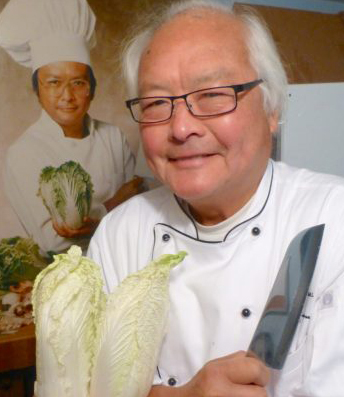Wok & Roll by Peter Kwong, (Frederic) Inter-County Leader
» Download this column as a Word document
Do you remember the last time your family ate together, with no interruptions from phone calls or text messages?
I thought it was a joke at first, when a friend sent me an email, attaching a picture of a family having dinner together, and each family member (except the baby) was on the cell phone, either receiving or sending text messages. I was quite sad after finding out that it wasn’t a joke after all, but is actually happening in our daily households these days.

What happened to the good old tradition, with everyone sitting around the dinner table? We passed the food, ate the food, and then talked about our days at work or at school.
We would spend hours at the table, no TV, no kids from next door visiting, just time for the family. And then, all of a sudden, the tradition is gone. What happened?
As our standards of living keep rising, the need for more disposable income also escalates. The days of parents staying home and taking care of all the household chores are gone. Now, most parents have to carry a full-time job, plus taking care of all the household chores!
And guess what happens to the family meals and eating together? Yes, times have changed, and life has changed with time. We see the long line in the drive-through at the fast-food joints, where folks can’t wait to get their food, so they just chow down quickly in their cars on their ways to the movies or the malls.
It reminds me of those word of wisdom often (and incorrectly) attributed to comedian George Carlin — “We’ve learned how to make a living but not a life” and “These are the times of fast foods and slow digestion.”
We spend thousands of dollars signing up for weight watching programs in order to lose weight, and watching “The Biggest Loser,” wishing that whatever works for those ‘winners’ would also work for us. However, I have two words of advice that would resolve most of the issues.
Eat slowly.
We have totally forgotten the art of eating. “Slow eating” is not only an art, but it is also a health requirement. When we fill up our stomach with foods and drinks, the message that we are getting full doesn’t reach our brain for at least twenty minutes. Yes, twenty minutes.
So, when we are wolfing down our dinner, and our stomach tells us that it has reached capacity, just where do you think the food that we consume in the extra twenty minutes is stored?
There are many ways/styles to serve foods in different restaurants:
- French – tableside service, the server would finish cooking your meal and serve next to your table, most often in a cart. Expect a lot of spectacular ‘en flammes’ entrees when the server actually sets your food on fire by heating up some brandy (or cognac)!
- Russian – the server(s) will carry plates of food around the table, and you just pick out what you want. Or, it can be in a buffet form. But still, you got your choice.
- English – plates or bowls of food will be set on the table, and the guests will just pass each item around. I think we have adopted that style with our Thanksgiving or Christmas dinners.
- American – each plate is already plated in the kitchen. Your entrée usually consists of meat, starch and vegetables. Soup or salad and desserts are extras.
- Chinese – either all the entrees are set on the table; or they are served separately, one course at a time.
Regardless of what style to serve the food, they all emphasize the “togetherness” in enjoying the food, and the time it requires to relish each meal. Eating is an event indeed, not a necessity of just filling the stomach with whatever we can conveniently track down.
So, what is “the Art of Eating”? Here are some simple rules to follow:
- Take the time to eat your food, allow 15 minutes for a quick breakfast, half an hour for lunch, and at least forty-five minutes for dinner. Actually sit down and eat your food slowly.
- Can you taste your food? Instead of filling your stomach with whatever you can get your hands on, chew slowly so you can taste what the ingredients are.
- Don’t forget the “20-minute rule.” It takes 20 minutes to send the signal from your stomach to your brain that you are full. When your brain gets the signal, stop eating. Take whatever is left home or refrigerate it for later.
- Exercise, or engage in activities that will get rid of those excess calories.
- Focus on eating and spending time with your family. Turn off your cell phones. Rediscover the pleasantness of being with family and friends.
It is simple and healthy. Start eating slowly and enjoy the food.
Try it, you’ll love it.



